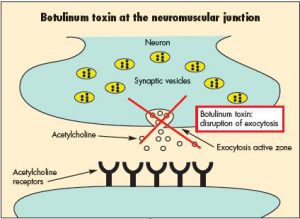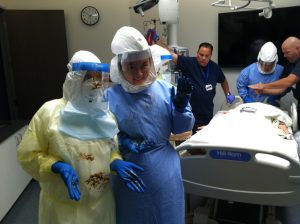Archive for August, 2019
At least 19 were killed and 30 injured in multiple car explosions outside Egypt’s National Cancer Institute
Monday, August 5th, 2019“……A car driving against traffic collided with three cars on Sunday night….in….Cairo and triggered an explosion and a fire…..”
Dayton, Ohio: Gunfire results in 10 deaths, including gunman; at least 16 wounded
Sunday, August 4th, 2019El Paso mass shooting is being investigated as domestic terrorism
Sunday, August 4th, 2019https://www.youtube.com/watch?v=PCGM8HKi-jc
Yemen eliminates Lymphatic Filariasis as a public health problem
Sunday, August 4th, 2019https://www.youtube.com/watch?v=DPldQtf7_MU
Heptavalent Botulinum Antitoxin Treatment
Saturday, August 3rd, 2019Jason S Richardson, Geraldine S Parrera, Hugo Astacio, Harpreet Sahota, Deborah M Anderson, Christine Hall, Tim Babinchak, Safety and Clinical Outcomes of an Equine-Derived Heptavalent Botulinum Antitoxin Treatment for Confirmed or Suspected Botulism in the United States, Clinical Infectious Diseases, , ciz515, https://doi.org/10.1093/cid/ciz515
“…….Among 162 patients, 7 (4.3%) experienced BAT product-related serious adverse events, including 1 (0.6%) report each of pneumonia, pneumonia aspiration, ventricular tachycardia, upper gastrointestinal hemorrhage, anaphylactic reaction, acute kidney injury, and acute myocardial infarction. Thirty-one (19.1%) patients had 41 BAT product-related adverse events. Six (3.7%) deaths were reported in the registry. All deaths were attributed to the underlying illness and were assessed as unlikely related to BAT product. Among 113 (69.8%) patients with a final diagnosis of botulism, those treated early (≤2 days) spent fewer days in the hospital (5 vs 15.5 days), in the intensive care unit (4 vs 12 days), and on mechanical ventilation (6 vs 14.5 days) than those treated late (>2 days), respectively……..”
In celebration of World Breastfeeding Week
Friday, August 2nd, 2019“……The benefits of breastfeeding don’t just extend to babies; studies found it can even protect women from breast and ovarian cancer later in life, reduce the risk of type 2 diabetes and contribute to healthy timing and spacing of pregnancies. In fact, scaling up breastfeeding could prevent over 800,000 child deaths and 20,000 deaths among women each year...…”
World Breastfeeding Week 2019
Friday, August 2nd, 2019The cognitive, health and economic benefits of breastfeeding are well established and recognized, yet only 37 percent of children under 6-months-old in low- and middle-income countries are exclusively breastfed and about 50 percent of newborns initiate breastfeeding within one hour of birth.
Breastfeeding has one of the highest returns on investment of any development activity: every dollar invested in breastfeeding interventions yields an estimated $35 in economic gains. Breastfeeding duration is also associated with higher IQ and income as well as greater educational attainment. Inversely, suboptimal breastfeeding is associated with economic losses of about $302 billion each year, or 0.49 percent of world gross national income. With support to scale up global breastfeeding practices, the deaths of 823,000 children under 5-years-old and 20,000 women could be prevented, annually.
Can Sydney, Australia manage a smallpox attack? It depends.
Friday, August 2nd, 2019MacIntyre CR, Costantino V, Kunasekaran MP (2019) Health system capacity in Sydney, Australia in the event of a biological attack with smallpox. PLoSONE 14(6): e0217704.https://doi. org/10.1371/journal.pone.0217704
“……We estimated 100638 clinical HCWs and 14595 public hospital beds in Sydney. Rapid response, case isolation and contact tracing are influential on epidemic size, with case isolation more influential than contact tracing. With 95% of cases isolated, outbreak control can be achieved within 100 days even with only 50% of contacts traced. However, if case isolation and contact tracing both fall to 50%, epidemic control is lost. With a smaller initial attack and a response commencing 20 days after the attack, health system impacts are modest. The requirement for hospital beds will vary from up to 4% to 100% of all available beds in best and worst case scenarios.
If the response is delayed, or if the attack infects 10000 people, all available beds will be exceeded within 40 days, with corresponding surge requirements for clinical health care workers (HCWs). We estimated there are 330 public health workers in Sydney with up to 940,350 contacts to be traced.
At least 3 million respirators will be needed for the first 100 days. To ensure adequate health system capacity, rapid response, high rates of case isolation, excellent contact tracing and vaccination, and protection of HCWs should be a priority. Surge capacity must be planned. Failures in any of these could cause health system failure, with inadequate beds, quarantine spaces, personnel, PPE and inability to manage other acute health conditions…..”




